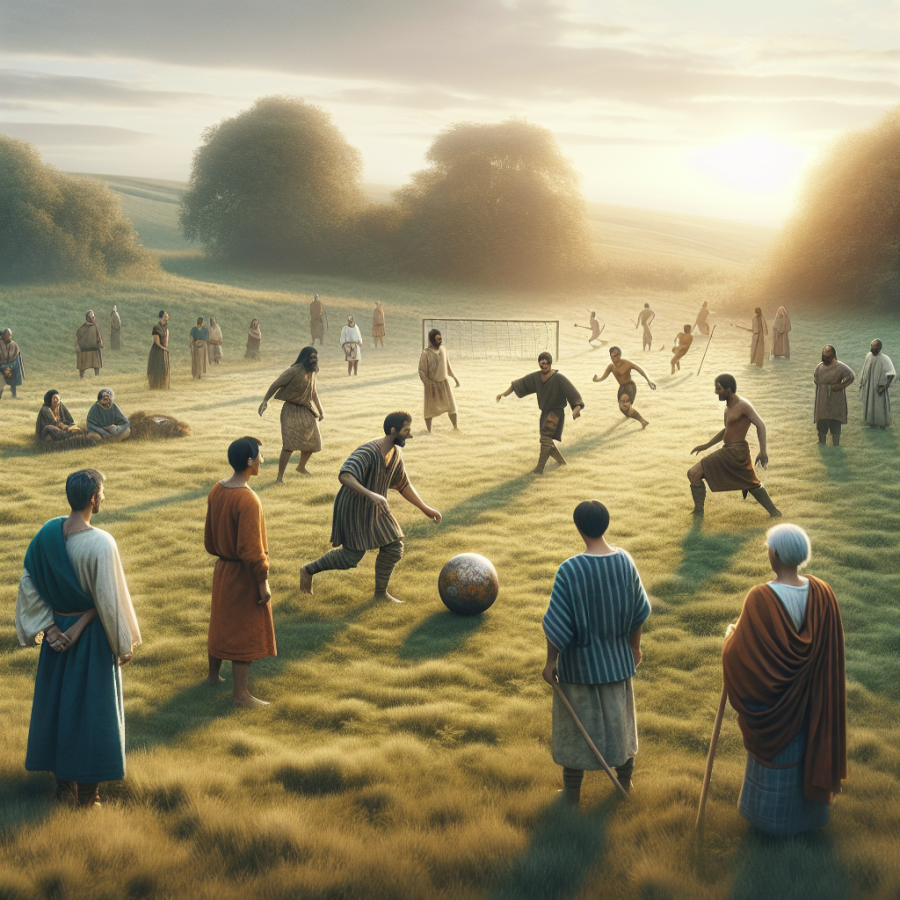The Early Civilizations and their Role in shaping Modern Soccer
The roots of modern soccer can be traced to civilizations across the world during ancient times. Notably, the captivating game has evolved dramatically over thousands of years, profoundly influenced by various civilizations that have played key roles in shaping its modern form.
One of the first recorded forms of a soccer-like game can be traced back to ancient China around 255 - 206 BC, during the reign of Emperor Qin Shi Huang. A game called Cuju or Tsu' Chu, akin to modern soccer, was part of military training. Cuju, which literally means 'kick ball,' saw players aim to kick a leather ball filled with feathers and hair through an opening, typically measuring about 30-40cm wide, with no use of hands allowed. This ancient game significantly influenced the fundamental aspect of scoring goals in modern soccer.
In ancient Greece, a similar game known as Episkyros was popular among the Greeks. The game was less structured compared to Cuju, and the ball was made out of inflated or stuffed pig bladders. A notable contribution of the ancient Greeks to modern soccer was their pioneering effort to organize competitions. In Rome, which took on the Greek passion for sports, a similar game called Harpastum was played. Despite its violent nature, Harpastum was crucial in birthing disciplined teams and strategic gameplay, dimensions integral to modern soccer.
In the Middle Ages, the ball game continued to evolve in different parts of the world. The Native Americans played a game called Pasuckuakohowog, which translates to "they gather to play ball with the foot." The rules were less rigid, with as many as 1000 players participating at once and goals several miles apart, making the game taxing and somewhat chaotic. However, this game was critical in introducing the element of endurance, an essential ingredient in the modern soccer game.
Across the Atlantic in medieval England, a game called Mob Football or Shrove tide football became popular, although it was more of a melee than a structured game. Despite drawing criticism for being too violent and chaotic, it set the groundwork for rulemaking in soccer. The Church and local authorities attempted to ban it countless times, leading to standardizing the rules and formalizing teams, ultimately helping shape modern soccer.
In conclusion, the history of soccer is a beautiful exemplification of the world's cultures molding a game that transcends borders.
Read also:
Exploring the Abundance of Golf Courses in California
Tracing Back to the Roots: The Start of Soccer
Soccer, also known as football, boasts of millions of fans worldwide. Its popularity cuts across all ages, races, and social classes, making it truly a global sport. One might wonder, where did this beloved sport originate?
Scholars agree that soccer has a complex and diverse history, with its origins tracing back to various civilizations and cultures. One of the earliest versions was a Chinese game called "Tsu-Chu," which dates back to the Han Dynasty around 206 BC-220 AD. This game involved kicking a leather ball filled with feathers into a small net, with players forced to use their feet, chest, back, and shoulders while their hands were bound.
Across the world in ancient Greece, a similar game referred to as "Episkyros" was also taking shape. Around 400-375 BC, this game was primarily a military exercise where two teams typically comprising 12-14 players kicked or threw a ball towards each other. There was no goalpost, and players could use any part of their body except their arms.
Meanwhile, in Japan, another similar game called "Kemari" was played as early as 600 AD during the Asuka period. This game was less competitive than Tsu-Chu and Episkyros, focusing more on improving physical fitness and building team harmony. Players stood in a circle and passed the ball to each other, keeping it off the ground using their feet.
Despite these early variations, the game as we know it today owes much to England. By the Middle Ages, a game known as "mob football" had gained popularity, ranging from rudimentary games played in streets and public squares to organized matches curated by local schools. Closer to modern soccer, the game involved teams competing to transport a ball to specific geographic targets.
The reign of King Edward III posed a threat to the continuity of soccer. In 1365, he passed laws forbidding the game, arguing it distracted from the nation's military pursuits. Despite the ban, the game's popularity persisted, leading even to the arrest of those who dared to play.
The transformation from medieval mob football to contemporary soccer occurred in the 19th century. Schools across England started to standardize the rules, moving away from the somewhat chaotic and unregulated nature of early forms. This led to the formation of the Football Association in 1863.
The Association consolidated and formalized the rules, the most significant being the prohibition of using hands during the game.




